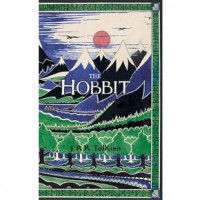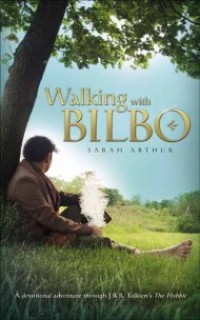The Hobbit: There and Back Again in 75 Years
Aaron Lewendon - Eden Bibles & Bible Study Specialist
In the early 1930s an Oxford academic was inspired - while trawling through exam papers - to write the words: 'In a hole in the ground there lived a Hobbit'. Arguably, this is the most productive piece of procrastination recorded in human history.
The Hobbit: Origins

J.R.R (John Ronald Reuel) Tolkien’s words opened the door to ‘Middle Earth’ - the setting for ‘The Hobbit’. Eventually, Tolkien's manuscript found its way into the hands of Allen & Unwin, who published the first edition on 21st September 1937.
Though the book was popular, the number of copies available was limited by paper-rationing that came about during World War Two. However, a second edition was published in 1951 - this would be followed up with further editions by Allen & Unwin and other publishers. The book rose to worldwide fame, and has been translated into over forty languages to date.
An Unexpected Journey
In case you’re unfamiliar with the storyline of ‘The Hobbit’, here’s quick synopsis:
Bilbo Baggins is a Hobbit (a miniature person) who lives in a comfortably furnished ‘hole’ in Hobbiton. The wizard, Gandalf, arrives with thirteen of dwarves. At this ‘unexpected party’ Bilbo is convinced by Gandalf to accompany the dwarves on their quest to recover stolen gold from the dragon Smaug.
Bilbo’s role in the group is ‘burglar’, but until he finds a magic ring in the tunnels of the Misty Mountains, he is a fairly pathetic party-member. As the adventure unfolds, different character attributes are revealed and developed through the experiences they share.
I won’t reveal the end, in the event that you haven’t yet read this fantastic book.
Hobbit Literature
Since the first publication of 'The Hobbit', and especially since the publication of ‘The Lord of the Rings’, there have been enthusiasts who have sought to understand the intricate background and subplots that Tolkien crafted. The author’s Catholic faith has caused much speculation about the presence of Christian themes within the text. Here are two works - and their respective synopses - that relate to this: ‘The Christian World of The Hobbit,’ and ‘Walking with Bilbo.’
The Christian World of ‘The Hobbit’
Devin Brown has compiled a sensitive study into the Christian aspects found within ‘The Hobbit’. Brown tries to avoid conjecture and 'the sort of psychoanalysing about authors which Tolkien hated.’ Instead, he focuses on evidence that can be found in Tolkien’s letters. One example of this is where, in a 1958 letter, Tolkien wrote: ‘I am a Christian, which can be deduced from my stories.’ This points to the nature of the Christian content of Tolkien’s work - it is not overt, it must be deduced; but to the perceptive reader, this knowledge about the author should be clear.
The result is that readers can disagree with Tolkien’s Christian beliefs, but still enjoy the story. Devin Brown observes that ‘The main purpose of Tolkien’s stories of imaginary beings in an imaginary world was to provide a better understanding of our world and the real beings who inhabit it.’ Musing how Tolkien’s Middle Earth reflects our world - or differs from it - is certainly interesting, particularly because Middle Earth is a world fraught problems, not an idealistic place of perfection.
‘Tolkien’s works are fundamentally Christian. They are not Christian allegories.’ Brown explains that allegory uses a surface story to point to a ‘real’ story, whereas Tolkien’s faith is reflected in his fiction, and his stories are genuine.

Walking with Bilbo
This book is a devotional designed for youths, but is also applicable to adults who have a particular interest in ‘The Hobbit’.
Sarah Arthur takes quotes from ‘The Hobbit’ to relate the scenarios found there to Christian teachings. In a chapter, for example, the author could take the theme ‘lure of gold’ from ‘The Hobbit’ and relate this to Bible passages on the trappings of material wealth and greed. At the end of the chapter she asks excellent application questions that will get the reader thinking.
It’s a devotional with a twist.
Return to Bag End
We can look back on ‘The Hobbit’ and the impact it has had over the last 75 years since its first publication with continuing joy. I urge you to revisit ‘The Hobbit’ if you have already read it, and consider reading one of the two books summarised above, if they have sparked your interest or explore deeper with our selection of books about Tolkien and The Hobbit.
Latest Blogs

Bibles
Minecraft Bible for Kids: Faith Meets Fun After the Hit Movie
Now that they've seen The Minecraft Movie, now’s the perfect time to hand kids a Bible they won’t want to put down.

Bible Verse
Bible Verses About Peace
Read Bible Verses About Peace and discover how the Bible still speaks today.

Bibles
Gen Z and the Rise of Catholic Faith: Bible Trends to Watch
When it comes to church, Gen Z isn’t walking away—they’re walking somewhere unexpected.

Children's bibles
What is a Storybook Bible?
A storybook Bible is a children's book that presents narratives from the Bible in a simplified and engaging manner, tailored for young readers. These books combine vivid storytelling with colorful illustrations to make the teachings of the Bible accessible and captivating for children.

Bible
What is the New International Version (NIV) Bible?
Finding the right Bible isn’t easy. There are dozens of translations and hundreds of editions to choose from. Our new series of guides is here to answer your questions about the different Bibles on offer today.

Bible
What is the New Living Translation (NLT) Bible?
Finding the right Bible isn’t easy. There are dozens of translations and hundreds of editions to choose from. Our new series of guides is here to answer your questions about the different Bibles on offer today.
